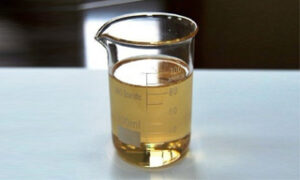Explore the feasibility of using Heavy Alkylate Benzene (HAB) as a primary base oil in lubricant formulations. This article provides a detailed comparison of physicochemical properties, performance metrics, compatibility factors, and application insights for high-performance lubrication.

Summary
Heavy Alkylate Benzene (HAB) — a mixture of diphenyl alkanes and de-alkylated benzene by-products from LAB production — is already used in refrigeration and electrical oils and shows promise as a lubricant base stock due to its thermal stability, solvency, and pour-point behavior. Compared to paraffinic and naphthenic base oils, HAB offers superior low-temperature fluidity and oxidative stability, though it typically has a lower viscosity index and reduced additive solvency compared to Group II/III oils. Technical studies confirm HAB’s satisfactory wear protection in compressor applications, but full replacement of conventional base oils requires careful formulation to address VI, seal compatibility, and oxidation resistance.
Introduction
Conventional lubricant base oils fall into API Groups I–III (paraffinic) or Group V (naphthenic and others) based on refining process and composition. The search for alternative base stocks has highlighted Heavy Alkylate Benzene (HAB), a by-product of linear alkyl benzene (LAB) manufacture, as a potential replacement. This article examines whether HAB can function as a primary base oil, comparing its physicochemical properties, performance metrics, and formulation considerations against standard mineral and synthetic oils.
What is Heavy Alkylate Benzene (HAB)?
Heavy Alkylate Benzene is a complex mixture of di-phenyl alkanes and de-alkylated benzene fractions derived during the alkylation of benzene with long-chain olefins . It is a clear, non-corrosive liquid with good hydrolytic stability and solvency, primarily used in thermic fluids, refrigeration oils, electrical oils, and as a raw material for sulfonation to produce surfactants.
Physicochemical Properties of HAB vs. Conventional Base Oils
| Property | HAB | Group I/II/III Paraffinic Oils | Naphthenic Oils (Group V) |
|---|---|---|---|
| Viscosity Index (VI) | ~70–85 (lower) | 80–120 (Groups I/II) >120 (III) | 60–90 (variable) |
| Pour Point (°C) | –30 to –20 °C | –15 to –45 °C (better with III) | –50 to –20 °C (excellent) |
| Flash Point (°C) | 160–200 °C | 180–250 °C | 150–220 °C |
| Oxidative Stability | Good | Moderate (I) to Excellent (III) | Moderate |
| Solvency for Additives | Moderate | Low (I) to Good (III) | Excellent |
| Aromatic Content | High (> 50 %) | Low (< 1 % in II/III) | Moderate |
| Density (g/cm³) | 0.88–0.92 | 0.85–0.90 | 0.90–0.94 |
Data compiled from industry sources and technical datasheets Soltex, Inc.transparencymarketresearch.com.
Performance in Lubricant Applications
Wear Protection & Friction
Laboratory studies on refrigeration compressors demonstrate alkyl benzene base stocks deliver wear scar diameters and friction coefficients comparable to paraffinic oils, making them viable in niche applications.
Thermal & Oxidative Stability
HAB exhibits high thermal stability due to its aromatic structure, resisting thermal degradation up to 200 °C; however, its oxidation stability under ASTM RPVOT tests is generally lower than hydrocracked Group II/III oils, requiring antioxidant additives.
Low-Temperature Fluidity
With pour points as low as –30 °C, HAB rivals naphthenic oils for cold-start performance but falls short of the –45 °C ratings of premium Group III paraffin base stocks.
Formulation Considerations
Additive Compatibility
Detergents & Dispersants: HAB’s aromatic matrix enhances solvency, aiding dispersant performance but may require polarity adjustments.
VI Improvers: To raise VI, polymers such as polymethacrylates or PIB may be needed at higher treat rates compared to paraffinic stocks.
Seal & Elastomer Compatibility: High aromatic content can swell certain elastomers; screening for compatibility with nitrile, EPDM, and fluorocarbon seals is essential.
Health, Safety & Environmental
HAB is non-corrosive and of low toxicity, but its high aromatic content mandates strict occupational exposure controls. It is not readily biodegradable and must be managed per petrochemical regulations.
Case Studies & Commercial Use
Refrigeration Oils: Tabulated alkyl benzene refrigeration oils (ISO 32) leverage HAB for solubility with halogenated refrigerants and long fluid life.
Electrical Insulating Fluids: HAB-based transformer oils offer strong dielectric strength and thermal conductivity.
Specialty Industrial Oils: Soltex alkylate fluids use HAB as base stocks for functional fluids requiring excellent seal swell and solvency.
Pros & Cons of HAB as Base Oil
Pros:
Excellent solvency for polar additives
Good thermal stability and dielectric properties
Superior low-temperature fluidity vs. paraffin oils
Cons:
Lower viscosity index → higher treat rates of VI improvers
Reduced oxidation stability → more antioxidants needed
High aromatic content → potential seal compatibility issues
Conclusion
Heavy Alkylate Benzene can serve as a specialty base oil in select lubricant formulations—particularly refrigeration, electrical, and functional fluids—thanks to its solvency, thermal stability, and low-temperature performance. However, for full replacement of conventional mineral or synthetic base oils in automotive and heavy-duty applications, formulations must address HAB’s lower viscosity index, oxidation resistance, and seal compatibility through tailored additive packages.
References for Further Reading:
Heavy Alkylate BENZENE (HAB) Overview — KeytonEnergy keytonenergy.com
Alkyl Benzene as a Compressor Lubricant — Purdue e-Pubs docs.lib.purdue.edu
Understanding Base Oil Formulations — MachineryLubrication machinerylubrication.com
Alkylate Fluids Technical Data — Soltex, Inc. Soltex, Inc.
Applications of HAB in Engine Oil & Hydraulic Fluids — ResearchGate ResearchGate
Naphthenic vs. Paraffinic Oils — ChemFluid Chem Fluid
Heavy Alkyl Benzenes Market Report — Transparency Market Research transparencymarketresearch.com
HAB Industrial Uses — Taiyaho International Co. Taiyaho International Co., Ltd.
Hermetic Compressor Oils Review — Sciencedirect ScienceDirect
HAB Safety Data Sheet — Qatar Energy qatarenergy.qa
